Physical Address
304 North Cardinal St.
Dorchester Center, MA 02124
Physical Address
304 North Cardinal St.
Dorchester Center, MA 02124
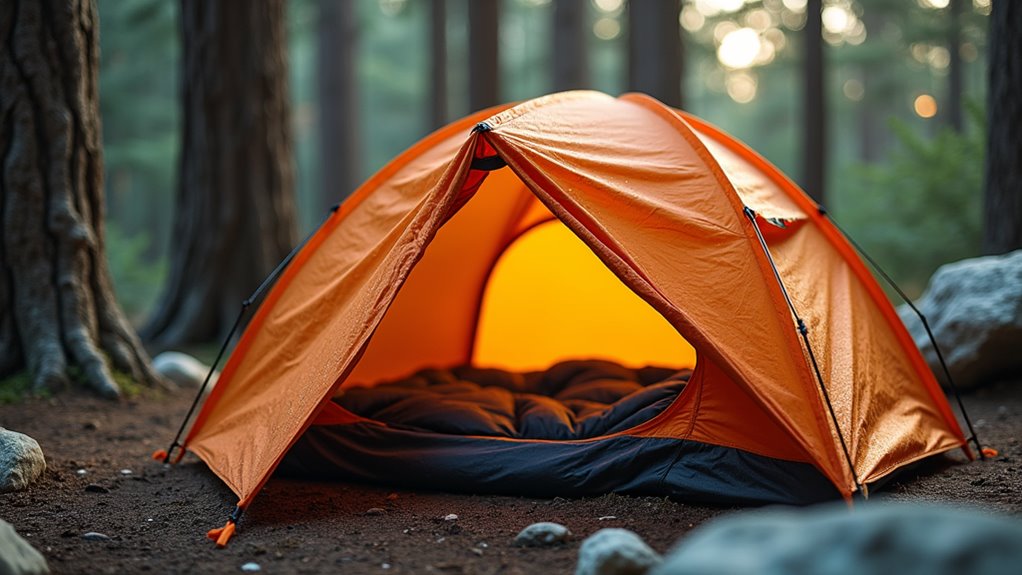
Waterproof ratings and hidden tent features could save your camping trip from becoming a costly, soggy nightmare you'll regret forever.
You probably don’t realize that your tent’s waterproof rating can mean the difference between a memorable adventure and a soggy disaster. Most campers focus on size and price, but there’s actually a science behind choosing the right shelter for your specific needs. Whether you’re planning a weekend car camping trip or a multi-day backpacking expedition, the wrong tent choice will quickly turn your outdoor escape into an expensive mistake you’ll want to avoid.
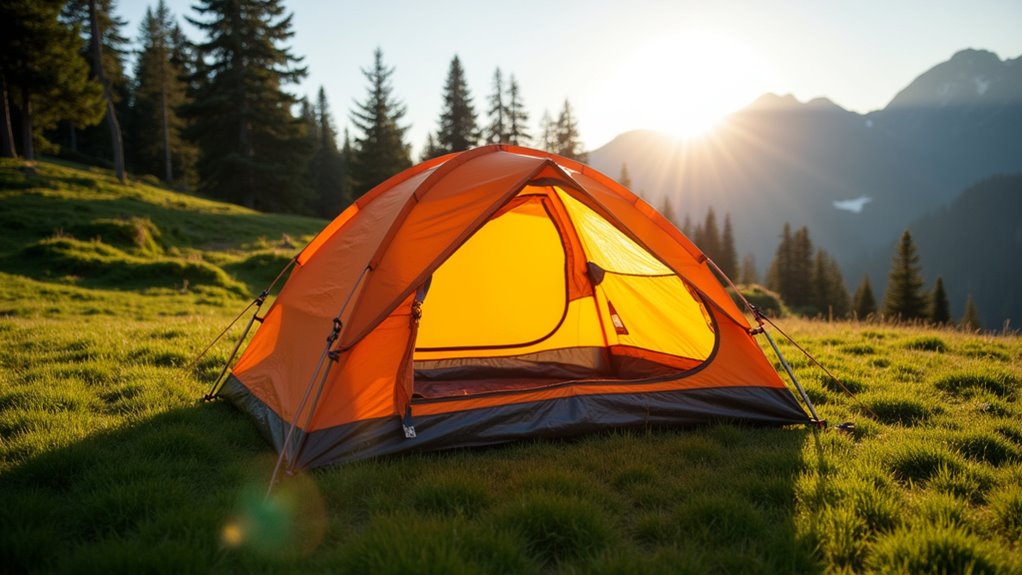
When you’re shopping for a camping tent, understanding the different types available will guarantee you save money and guarantee you get the right gear for your adventures.
Dome tents offer excellent stability and weather resistance, making them perfect for car camping and mild backpacking trips.
If you’re hiking long distances, ultralight backpacking tents prioritize weight savings over space.
Cabin tents provide maximum headroom and comfort for family camping but aren’t suitable for windy conditions.
Tunnel tents excel in harsh weather and offer good space-to-weight ratios for serious backpackers.
Pop-up tents work great for festivals and casual camping when convenience matters most.
Choose based on your specific needs: weather conditions, group size, weight requirements, and budget constraints.
Remember that selecting the perfect tent requires balancing all these factors to match your specific camping style and adventure goals.
Beyond tent type, several key features will make or break your camping experience and determine whether you’re getting real value for your money.
First, check the tent’s waterproof rating – you’ll want at least 1,500mm for reliable protection. Look for sealed seams and a full rainfly that extends to the ground.
Pay attention to pole quality. Aluminum poles cost more but won’t snap like fiberglass ones. DAC poles are the gold standard if your budget allows.
Consider ventilation features like mesh panels and vents to prevent condensation buildup. You’ll appreciate these during humid nights.
Finally, examine the tent’s footprint and packed size. Make sure it fits your campsite and backpack. Don’t forget to factor in vestibule space for gear storage – it’s incredibly valuable.
Also consider your hygiene needs when selecting a tent, as you’ll want adequate space near your shelter for setting up camping showers and maintaining cleanliness during extended outdoor trips.
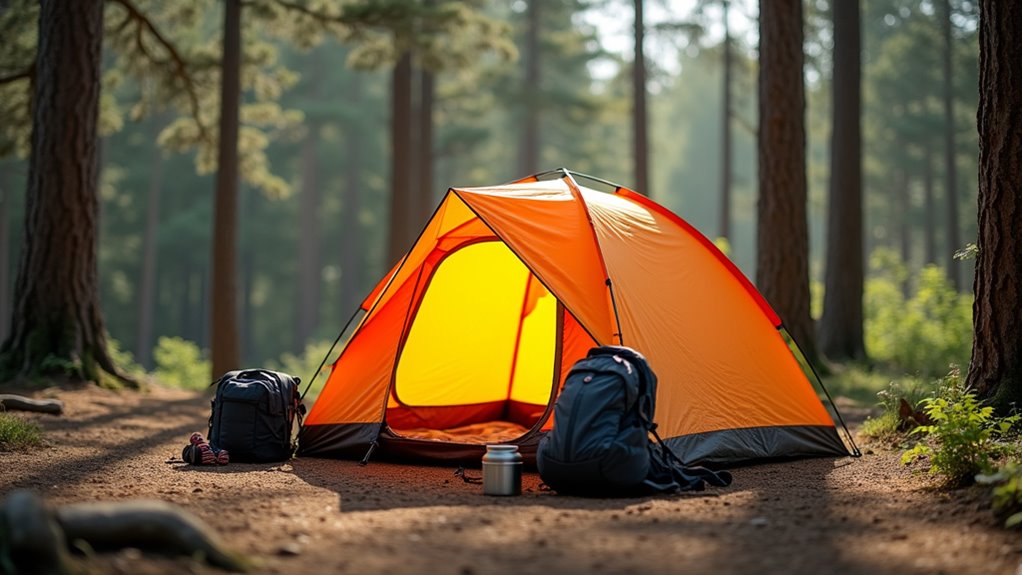
Getting tent capacity right matters more than most campers realize – squeeze too many people into a small space and you’ll have a miserable night, while oversizing wastes money and creates unnecessary bulk.
For solo camping, you’ll want a 1-2 person tent. Choose 2-person if you’re tall or need extra gear space.
Couples should consider 3-person tents for comfort, especially if you’re not ultralight backpackers.
Families with small children can share a 4-6 person tent, but teenagers need their own space.
Groups of 4+ adults work better with multiple smaller tents rather than one massive shelter.
Remember manufacturer ratings assume tight sleeping arrangements. Add one person to the stated capacity for realistic comfort.
Consider your gear storage needs too – wet clothes and muddy boots require space.
When backpacking in rainy conditions, you’ll need even more interior space for drying wet gear and staying comfortable during extended periods inside your tent.
While tent capacity gets most of the attention, weather resistance determines whether you’ll sleep comfortably or spend the night shivering in a puddle. Understanding seasonal ratings helps you choose smartly without overspending.
Three-season tents handle spring through fall conditions—light rain, wind, and moderate temperatures. They’re your best bang for the buck if you avoid winter camping.
Four-season tents withstand heavy snow, fierce winds, and extreme cold, but they’re pricier and heavier.
Look for waterproof ratings measured in millimeters. Anything above 1,500mm keeps you dry in steady rain.
The rainfly should extend to the ground, and seams need sealing.
Don’t forget ventilation—condensation builds up fast in sealed tents.
Quality zippers matter too; they’re often the first failure point during storms.
Beyond weather ratings, consider the tent size that matches your group and gear storage needs for maximum comfort during your outdoor adventures.
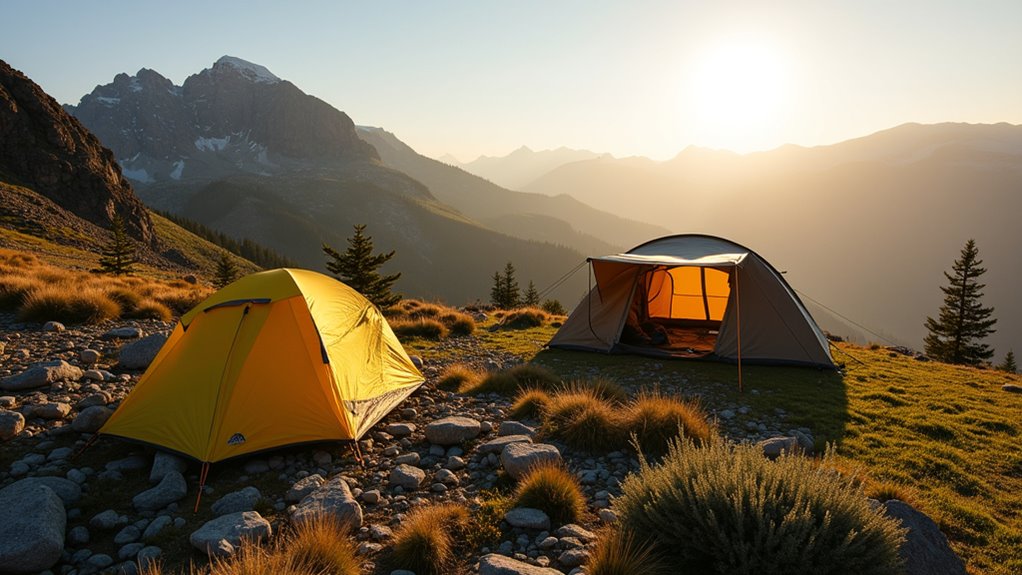
When you’re hauling gear on your back for miles, every ounce counts—but car campers can prioritize comfort over weight. Backpacking tents typically weigh 2-4 pounds and pack down small, while car camping tents can weigh 8-15 pounds with spacious interiors and extra features.
Consider these key weight factors:
Weight considerations can make or break your camping experience, especially when every ounce matters on multi-mile hikes.
You’ll pay a premium for ultralight gear, but if you’re car camping, heavier budget tents offer better value and comfort without the portability penalty. For those planning to explore challenging terrains like the Andes mountains, investing in lightweight, packable gear becomes even more critical for successful high-altitude adventures.
Budget plays a major role in tent selection, and you don’t need to break the bank for quality shelter. Entry-level tents from reputable brands offer solid performance at $50-150, perfect for occasional campers.
Mid-range options ($150-400) provide better materials, durability, and weather resistance for regular use.
Focus on essential features rather than extras. A basic three-season tent with reliable waterproofing beats an expensive model with unnecessary bells and whistles.
Consider your camping frequency—occasional users shouldn’t invest in premium gear meant for heavy use.
Shop end-of-season sales, check outlet stores, and compare prices across retailers.
Used tents can offer excellent value if inspected carefully for wear. Remember, a well-maintained budget tent often outperforms a neglected expensive one.
For maximum savings, explore affordable camping gear resources that provide comprehensive guides on finding quality equipment at discounted prices.
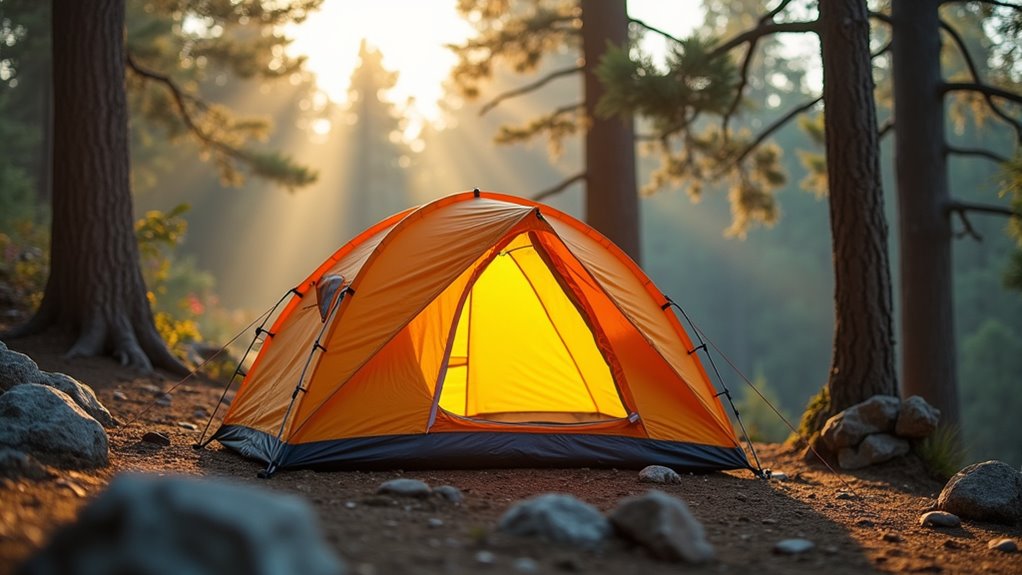
Since tent quality varies dramatically between manufacturers, choosing established brands guarantees you’re getting proven performance and reliable customer support. You’ll want to focus on companies that’ve earned their reputation through years of outdoor testing.
Here are three top-performing brands worth your investment:
Don’t overlook Kelty and NEMO for mid-range options that balance quality with affordability.
Research specific models within your budget range, read verified customer reviews, and consider visiting outdoor retailers to examine construction quality firsthand. Regular maintenance including keeping your tent spotlessly clean will extend its lifespan and maintain peak performance throughout countless adventures.
Think you need the most expensive tent to survive the wilderness? That’s completely wrong. You’ll actually do better with a mid-range tent that fits your specific needs rather than splurging on premium features you won’t use. Focus on matching your tent’s capacity, weather rating, and weight to your actual camping style. Don’t let fancy marketing fool you—a $150 tent that’s properly maintained often outlasts a neglected $400 model every time.